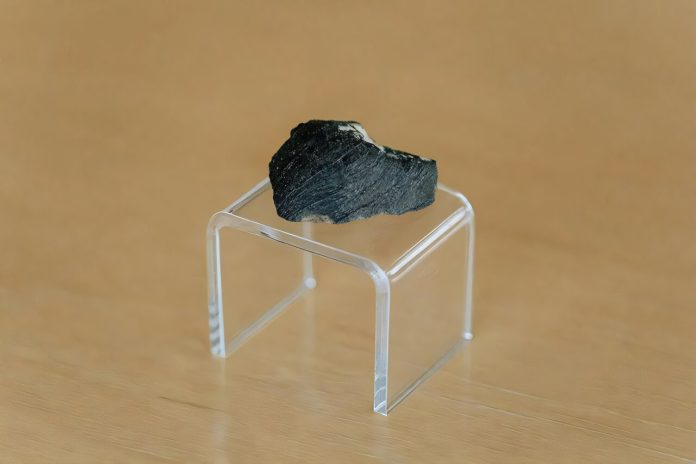
A team of scientists has found evidence of liquid water on Mars from 742 million years ago in a Martian meteorite known as the Lafayette Meteorite.
This meteorite, now at Purdue University, traveled from Mars to Earth after an asteroid impact on Mars about 11 million years ago sent fragments of the red planet into space.
The meteorite, which was rediscovered in a drawer at Purdue University in 1931, is one of the few pieces of Mars that scientists can study directly on Earth.
This recent discovery was led by Marissa Tremblay, an assistant professor at Purdue University, and her team, who published their findings in Geochemical Perspective Letters.
They used advanced techniques to study the mineral formations inside the Lafayette Meteorite, which formed through interaction with liquid water while the meteorite was still on Mars.
Tremblay specializes in studying noble gases like helium, neon, and argon to explore processes shaping planets.
By dating the minerals in the meteorite, Tremblay’s team could determine when water was present on Mars’s surface or near it.
The results revealed that the water-rock interaction in Lafayette happened around 742 million years ago.
According to Tremblay, this doesn’t mean Mars had abundant liquid water on its surface then.
Instead, the researchers think the water likely came from melting ice beneath the Martian surface, called permafrost. They believe volcanic activity on Mars periodically melts this permafrost, causing water to flow and alter minerals in rocks like Lafayette.
An important part of the team’s study was confirming the accuracy of this dating. As the meteorite traveled from Mars to Earth, it was exposed to high heat during its ejection from Mars, its journey through space, and its fiery entry through Earth’s atmosphere.
Each of these events could have affected the age of the water-altered minerals in Lafayette. However, the team was able to demonstrate that none of these events altered the original age of mineral formation due to water on Mars.
Ryan Ickert, a senior research scientist at Purdue, helped ensure the accuracy of the dating by analyzing stable and radioactive isotopes in Lafayette.
His analysis confirmed that the age of the water-rock interaction was correct, even though other data had previously produced conflicting results.
The Lafayette meteorite’s journey to Earth
While the exact timeline of Lafayette’s arrival on Earth is still uncertain, researchers know the meteorite was ejected from Mars about 11 million years ago.
As it drifted through space, it was bombarded by cosmic rays, which caused unique isotopic changes in the rock, confirming its Martian origin. Once the meteorite arrived on Earth, however, its story gets a bit mysterious.
It was found in a drawer at Purdue University in 1931, but how it got there remains unknown. Tremblay and her team have used traces of organic contaminants, including crop diseases found on the rock, to try to estimate when it might have fallen to Earth.
Meteorites: Time capsules from space
Meteorites like Lafayette act as “time capsules,” preserving information about their parent bodies and the conditions in space.
These rocks are often denser than Earth rocks and sometimes contain metal, making them magnetic.
They can also have a fusion crust formed during entry through Earth’s atmosphere. By studying meteorites, scientists can learn about the geology of other planets and bodies in the solar system.
The Lafayette study involved an international collaboration with scientists from institutions like the Scottish Universities Environmental Research Centre, the University of Glasgow, and the Natural History Museum in London. These researchers previously worked on studying Lafayette’s history and contributed to dating its mineral formations.
The technique used by Tremblay’s team to date Lafayette’s minerals can be applied to other meteorites to learn more about water in the solar system.
Purdue’s Earth, Atmospheric, and Planetary Sciences department, including undergraduate students, will continue researching meteorites to unlock more secrets about Mars and other planets.
This discovery opens new windows into understanding when and where liquid water existed on Mars, offering valuable clues about the planet’s ancient environment and potential for supporting life.



